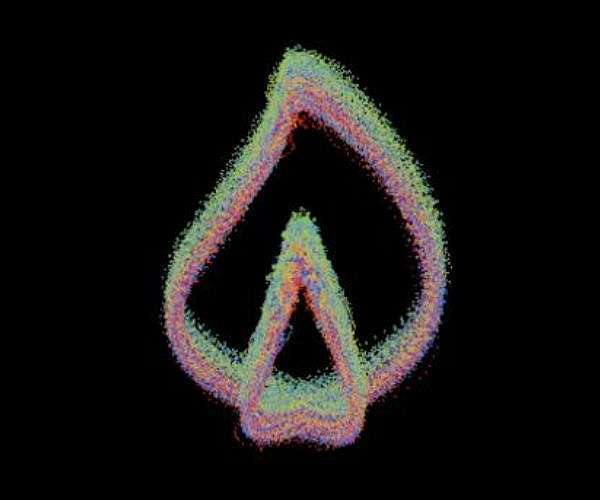5.02.2024

What looks like a flame is the measurement of the new time crystal: Each point corresponds to an experimental value, resulting in different views of the periodic dynamics of the nuclear spin polarization of the time crystal. Credit: Alex Greilich/TU Dortmund University
n a groundbreaking study recently published in Nature Physics, a research team from TU Dortmund University has made a significant leap forward in the development of time crystals, achieving a lifespan millions of times longer than any previously recorded. This development not only brings to life a concept that Nobel laureate Frank Wilczek theorized about a decade ago but also mirrors the fantastical elements seen in science fiction, such as Marvel Studios' "Avengers: Endgame."
Time crystals are a state of matter that, unlike traditional crystals which are characterized by their periodic structure in space, exhibit periodicity in time. This means that certain physical properties of the crystal oscillate in a regular, repeating cycle without external periodic forces acting upon it. Wilczek, a physicist at the Massachusetts Institute of Technology (MIT) and a Nobel Prize winner, originally proposed the idea in 2012, suggesting that time and space could harbor similar crystalline properties under the right conditions.
The team, led by Dr. Alex Greilich, engineered a novel time crystal within a crystal made of indium gallium arsenide. This material choice was pivotal, as the interactions between the nuclear and electron spins within it form the basis for the time crystal's behavior. By continuously illuminating the crystal, they induced a polarization in the nuclear spins, which then spontaneously generated oscillations - the hallmark of a time crystal.
Remarkably, the lifetime of this time crystal extended to at least 40 minutes, a duration that is ten million times longer than any previously demonstrated, with potential for even greater longevity. This achievement not only validates the theoretical possibility of time crystals but also opens new avenues for understanding quantum systems and their applications.
The researchers also explored the adaptability of the time crystal's periodicity by altering experimental conditions, demonstrating that the crystal's behavior could range from highly periodic to chaotic, where it loses its periodic structure. This "melting" into chaos represents a first in the scientific community's ability to observe and analyze such transitions in time crystals.
This breakthrough holds significant implications for the field of quantum physics and beyond. The ability to create and maintain time crystals for extended periods offers new possibilities for quantum computing, information storage, and our understanding of the fundamental principles of nature.
The publication of these results in Nature Physics underscores the scientific community's ongoing interest and investment in understanding complex quantum phenomena. As research into time crystals continues to evolve, the line between science fiction and science fact becomes increasingly blurred, heralding a new era of discovery in the quantum realm.
Quelle: SD

